Wood Turtle, Glyptemys insculpta, adult male, Michigan
Bog Turtle, Glyptemys muhlenbergii, adult female, New Jersey
Spotted Turtle, Clemmys guttata, adult female, Michigan
However, the emergence of modern molecular genetics and its role in constructing more accurate phylogenies didn't emerge until the late 1990s and most species had been classified before that time mostly on morphological characteristics. Feldman & Parham, 2002 used both cytochrome B and the ND4 gene to help examine the classification and evolutionary history of the Emydine turtles and found that wood and bog turtles were much more closely related to one another; both species have karyotype which contains fifty chromosomes, than they are to the spotted turtle. This coupled with other morphological characteristics helped lead to reclassification of wood & bog turtles to a new genus, Glyptemys. The etymology of the genus name comes from the Greek words glypt, meaning "carved," and emys, meaning turtle. This literally translates to "carved turtle" and is an accurate description for the highly ornate carapaces of both the bog & wood turtle, something not exhibited in the spotted turtle.
Bog Turtle
Glyptemys muhlenbergii
A denizen of calcareous wetlands in scattered locations across the eastern United States, the bog turtle is a small, secretive species which spends much of its time hidden meandering through these sensitive habitats. It was named in honor of Gotthilf Heinrich Ernst Muhlenberg, an 18th century botanist from Pennsylvania who first discovered this species in his millpond. The bog turtle is the smallest turtle species which is known to inhabit North America, most adults attain lengths of four inches. The head and neck are usually black or mahogany in coloration and two bright orange or yellow blotches which are found on either side of the neck. Like its close cousin the wood turtle, the carapace is highly sculptured and features prominent growth rings on each scute. It is usually dark in coloration, but may feature radiating lines or markings which can be mahogany in color.
Wood Turtle
Glyptemys insculpta
The name Glyptemys insculpta literally translates into "sculptured turtle" and there's no better way to describe the carapace of the wood turtle. Each scute has ornate, concentric growth rings that have been likened to the inside of a tree, another place where this species gets it's common name. The carapace coloration is usually brown in color and Michigan specimens usually feature many radiating yellow lines. The plastron is yellow in color with black outer blotches. The head is partially black in coloration, while the neck and limbs are yellow or yellowish orange in color with some black coloration as well. Adults are large, attaining carapace lengths between 6.5-9.5". Males are usually slightly larger then females and feature a concave plastron, an enlarged and widened head, and a long thick tail.
In Michigan, wood turtles inhabit medium
sized rivers with sandy or gravel substrates with ample surrounding
forest. They
occasionally wander into smaller streams and tributaries of larger
streams. This species is semi-aquatic and spends much of it's time form
September through May in and around the rivers themselves, but often
move upland into adjacent habitats in the summer months. These
terrestrial habitats include woodlands, meadows, pastures, and wetlands
where they spend much of their time foraging on earthworms, slugs,
mushrooms, and berries. Females tend to wander greater distances from
the river corridor than males, which can be quite territorial and appear
to spend much of their time patrolling their river corridor for mates
and potential intruding males.
Wood turtles are found throughout the upper peninsula and in the
northern half of the lower peninsula where suitable river corridor
habitat is available. A Species of Special Concern here in Michigan,
wood turtles have suffered
significant declines across its range due to illegal collection,
habitat loss, nest predation, and road mortality. Their striking
appearance, charismatic personality, and rarity make them highly sought
after in the herp community. Like other rare and declining turtle
species, nest predation and low recruitment of juveniles continues to be
the single greatest threat to future of the wood turtle.
Spotted turtles are easily recognizable by their dark black carapace and scattered yellow
spots. The plastron is yellow or orange with alternating black markings,
but it may occasionally be mostly black altogether. The limps are
reddish orange on the underside and black with yellow spots on top.
Adults are small, with carapace lengths ranging from 3-5". This species
is also sexually dimorphic, males have a concave plastron and usually
have a dark head and chin while females have a flat plastron and an
orange striped chin. It's noticeable that this species does not exhibit the sculpted carapace of the two Glyptemys species, and also does not feature the same pronounced beak seen in these two species.
Spotted turtles are almost always associated with wetlands with shallow,
clean water and a muddy or silty bottom and ample emergent vegetation.
These habitats include boggy ponds, prairie fens, grassy marshes, and
sphagnum seepages. In the early spring they can be seen basking on
sedges on warm, sunny afternoons like the individual pictured above.
Spotted turtles are incredibly cold tolerant and are among the first
species of turtle to begin basking in the early spring. As temperatures
rise, spotted turtles eventually dig into the mud to estivate during the
hottest and driest parts of the summer. Spotted turtles have been known to inhabit vernal pools in the
northeast, but may also inhabit them during the spring months in
Michigan as shown in the picture below.
Unfortunately the story of this species in Michigan and across it's
range is saddening. Spotted turtles have experienced severe declines due
to habitat loss by the draining of wetlands for agriculture, road
mortality, nest predation, and illegal collection. These declines have
been so severe that the species is listed as Threatened in Michigan.
Spotted turtles are rare and are found in scattered locations in the
southern and western parts of the lower peninsula.
The Verdict
Constructed Phylogeny using ND4 Gene - Stephens et al., 2003
Based on phylogenetic analyses and morphology, it's easy to see why both Glyptemys insculpta and Glyptemys muhlenbergii were cleaved from the Clemmys genus
and reclassified as their own, separate genus. Though all of these
species share a fairly recent common ancestor, spotted turtles are also
rooted from this part of the Emydidae family. Genetic analysis seems to show that at some point in the evolutionary history of this group, there was a divergence between Clemmys guttata and the common ancestor of the monophyletic group shown above. The Western Pond Turtle; formerly Clemmys marmorata, was also reclassified into a new genus Actinemys, and seems to have undergone a divergence with a common ancestor of the Blanding's Turtle (Emydoidea blandingii) and the European Pond Turtle (Emys orbicularis). Overall, it's a pretty interesting story involving this group of turtles.


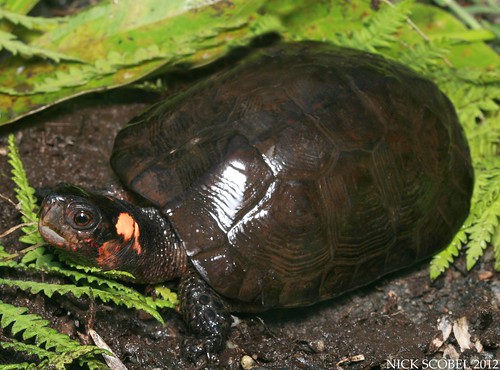

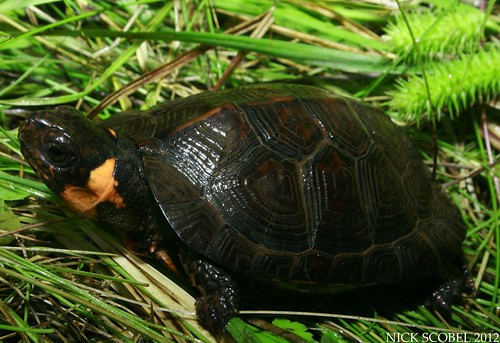
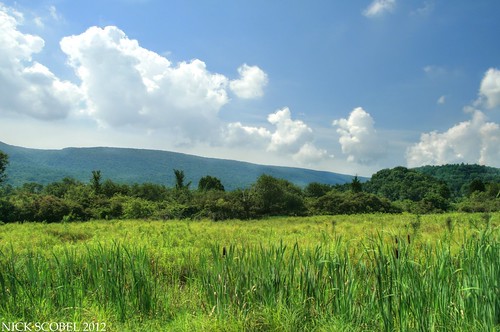
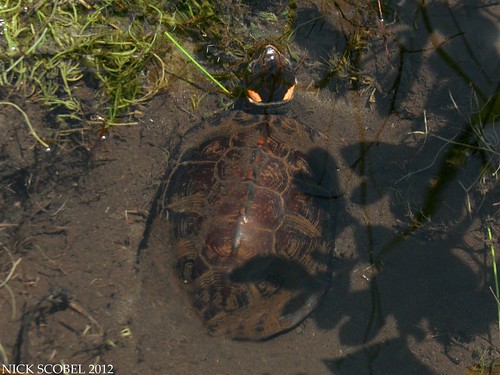
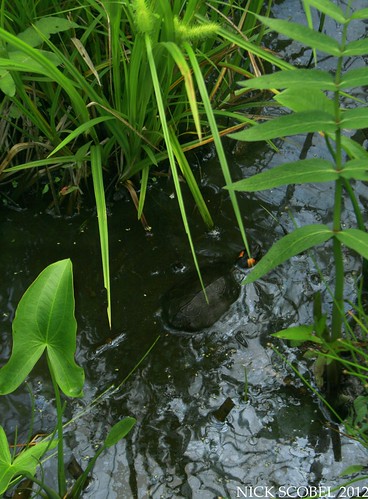
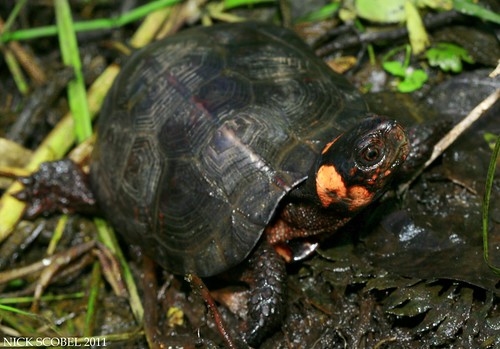
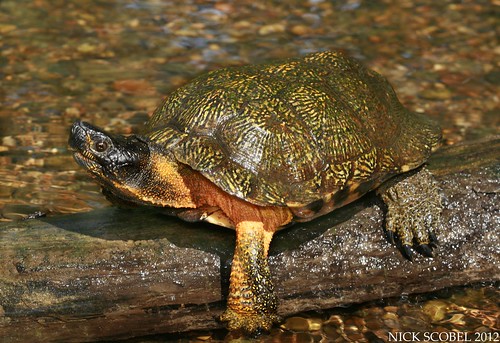
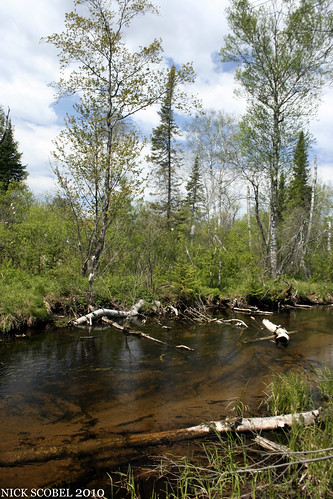

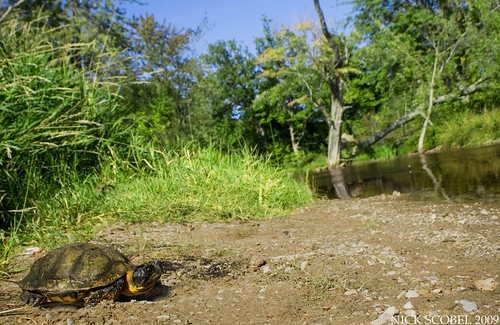
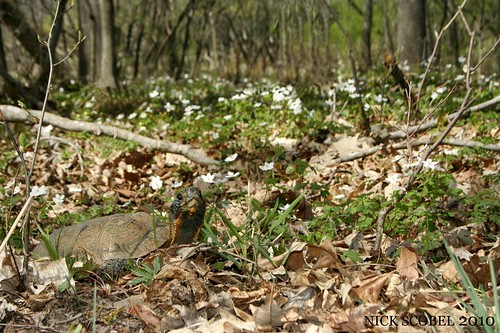
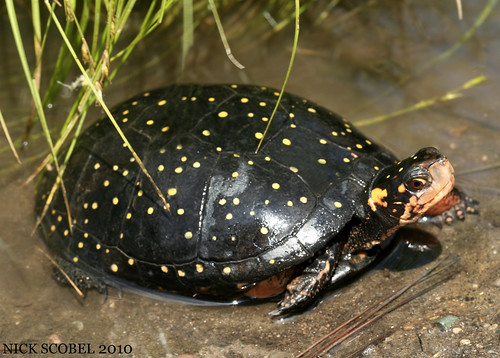
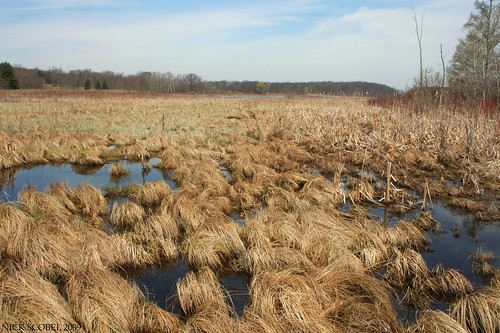


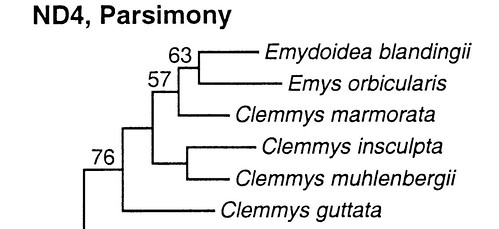
No comments:
Post a Comment